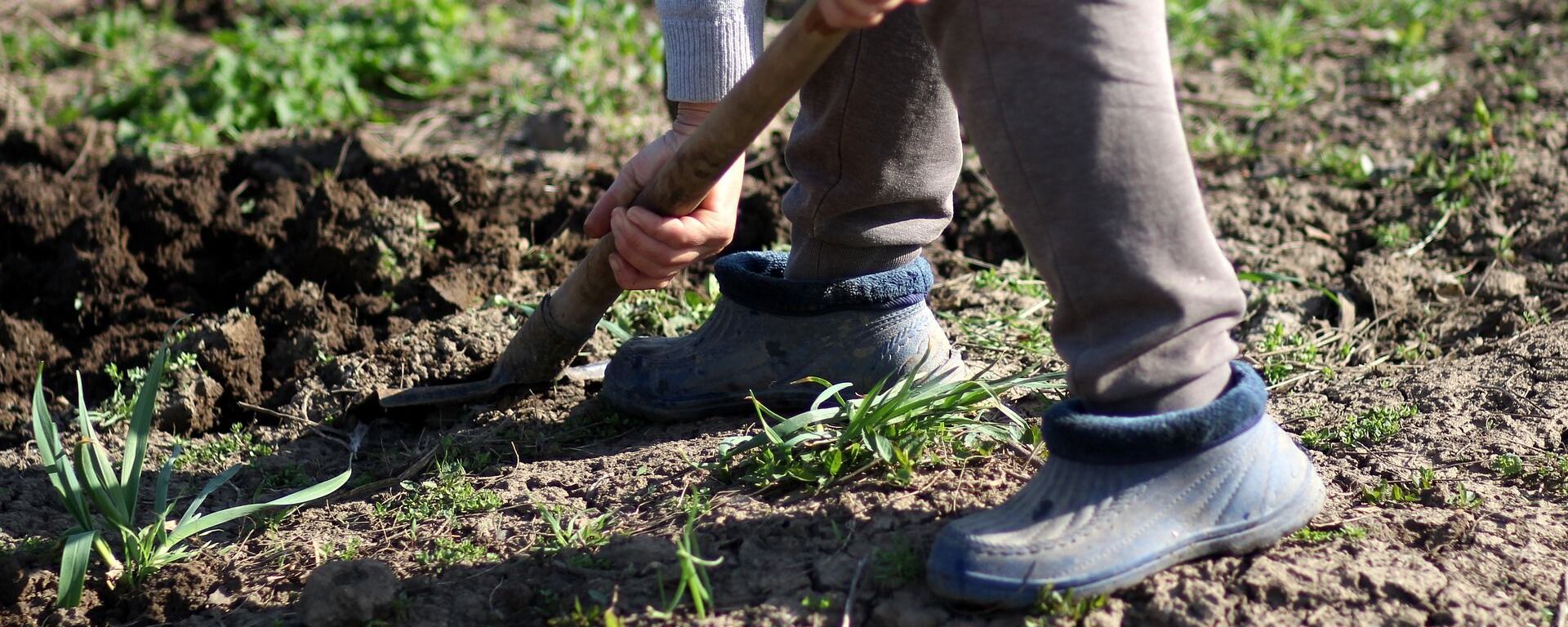https://sputnikglobe.com/20230707/1200-year-old-viking-boat-graffiti-provides-insight-into-early-icelandic-history-1111709684.html
1,200-Year-Old Viking 'Boat Graffiti' Provides Insight Into Early Icelandic History
1,200-Year-Old Viking 'Boat Graffiti' Provides Insight Into Early Icelandic History
Sputnik International
Viking "boat graffiti" from 1200 years ago was found in Iceland, making it the oldest drawing ever found in the country.
2023-07-07T01:57+0000
2023-07-07T01:57+0000
2023-07-07T02:04+0000
beyond politics
iceland
science & tech
europe
vikings
archeology
https://cdn1.img.sputnikglobe.com/img/07e7/07/07/1111709526_0:0:2048:1152_1920x0_80_0_0_f684e22e54dfbc5d5818ac9a2099b11d.jpg
A 1,200-year-old piece of Viking “boat graffiti” has been found in Iceland, making it the oldest drawing found in the country so far.Dating back to 800 AD, the incomplete drawing of a ship is carved into a piece of reddish clay stone. It was found in a longhouse that was discovered in 2007 when archaeologist Bjarni F. Einarsson was performing a survey for a local company that was installing fiber optic cables. After gaining funding and local support, Einarsson returned in 2015 to excavate the longhouse.Sitting in the Stöð area, near the village of Stöðvarfjörður in east Iceland, the longhouse itself has given significant insights into early Viking settlers of Iceland.The 12-century book written by the first Icelandic historians “Landnámabók” or “Book of Settlement” insisted that the Vikings first settled Iceland no earlier than 870 AD. While that book is still considered an invaluable account of early Icelandic history, archaeologists now believe the first settlements happened much earlier, but no one is sure of a date.The longhouse predates that estimate significantly. It was dated to before 800 AD using radiocarbon and volcanic ash measurements. The archaeological record shows it was rebuilt twice: once in the early 800s and again in the late 800s. The longhouse was large for one of that era, measuring 141 feet during its second iteration.The Viking boat graffiti stone was found behind a wall in the longhouse. Similar drawings are not uncommon in Scandinavia and are often found carved into bones, wood or stone.It is unclear why the Vikings drew such rudimentary drawings but it was not only limited to ships. Other drawings have been found of full fleets, a walrus face, geometrical patterns and pornographic text among other things. But the ship drawings in particular are unimpressive from an artistic perspective.Other artifacts discovered in the longhouse, including silver, lead and gold indicate a chieftain lived there and some discoveries from the longhouse’s second period, including an early form of Viking currency and a large number of beads indicate that the people living there may have been merchants.Survey equipment at the site revealed evidence of additional structures and boat burial sites in the area.
https://sputnikglobe.com/20230419/norwegian-amateur-archeologists-dig-up-5000-year-old-battle-axe-1109645835.html
iceland
Sputnik International
feedback@sputniknews.com
+74956456601
MIA „Rossiya Segodnya“
2023
News
en_EN
Sputnik International
feedback@sputniknews.com
+74956456601
MIA „Rossiya Segodnya“
Sputnik International
feedback@sputniknews.com
+74956456601
MIA „Rossiya Segodnya“
iceland history, first inhabitants of iceland, viking age, viking history
iceland history, first inhabitants of iceland, viking age, viking history
1,200-Year-Old Viking 'Boat Graffiti' Provides Insight Into Early Icelandic History
01:57 GMT 07.07.2023 (Updated: 02:04 GMT 07.07.2023) Iceland was the last European country to be settled, which has allowed archeologists and historians to find out more about its earliest inhabitants than other European countries.
A 1,200-year-old piece of Viking “boat graffiti” has been found in Iceland, making it the oldest drawing found in the country so far.
Dating back to 800 AD, the incomplete drawing of a ship is carved into a piece of reddish clay stone. It was found in a longhouse that was discovered in 2007 when archaeologist Bjarni F. Einarsson was performing a survey for a local company that was installing fiber optic cables. After gaining funding and local support, Einarsson returned in 2015 to excavate the longhouse.
Sitting in the Stöð area, near the village of Stöðvarfjörður in east Iceland, the longhouse itself has given significant insights into early Viking settlers of Iceland.
The 12-century book written by the first Icelandic historians “Landnámabók” or “Book of Settlement” insisted that the Vikings first settled Iceland no earlier than 870 AD. While that book is still considered an invaluable account of early Icelandic history, archaeologists now believe the first settlements happened much earlier, but no one is sure of a date.
The longhouse predates that estimate significantly. It was dated to before 800 AD using radiocarbon and volcanic ash measurements. The archaeological record shows it was rebuilt twice: once in the early 800s and again in the late 800s. The longhouse was large for one of that era, measuring 141 feet during its second iteration.
The Viking boat graffiti stone was found behind a wall in the longhouse. Similar drawings are not uncommon in Scandinavia and are often found carved into bones, wood or stone.
It is unclear why the Vikings drew such rudimentary drawings but it was not only limited to ships. Other drawings have been found of full fleets, a walrus face, geometrical patterns and pornographic text among other things. But the ship drawings in particular are unimpressive from an artistic perspective.
“[The boat graffitis] are extremely poorly done. They are no masterpieces," Einarsson said.
Other artifacts discovered in the longhouse, including silver, lead and gold indicate a chieftain lived there and some discoveries from the longhouse’s second period, including an early form of Viking currency and a large number of beads indicate that the people living there may have been merchants.
Survey equipment at the site revealed evidence of additional structures and boat burial sites in the area.



